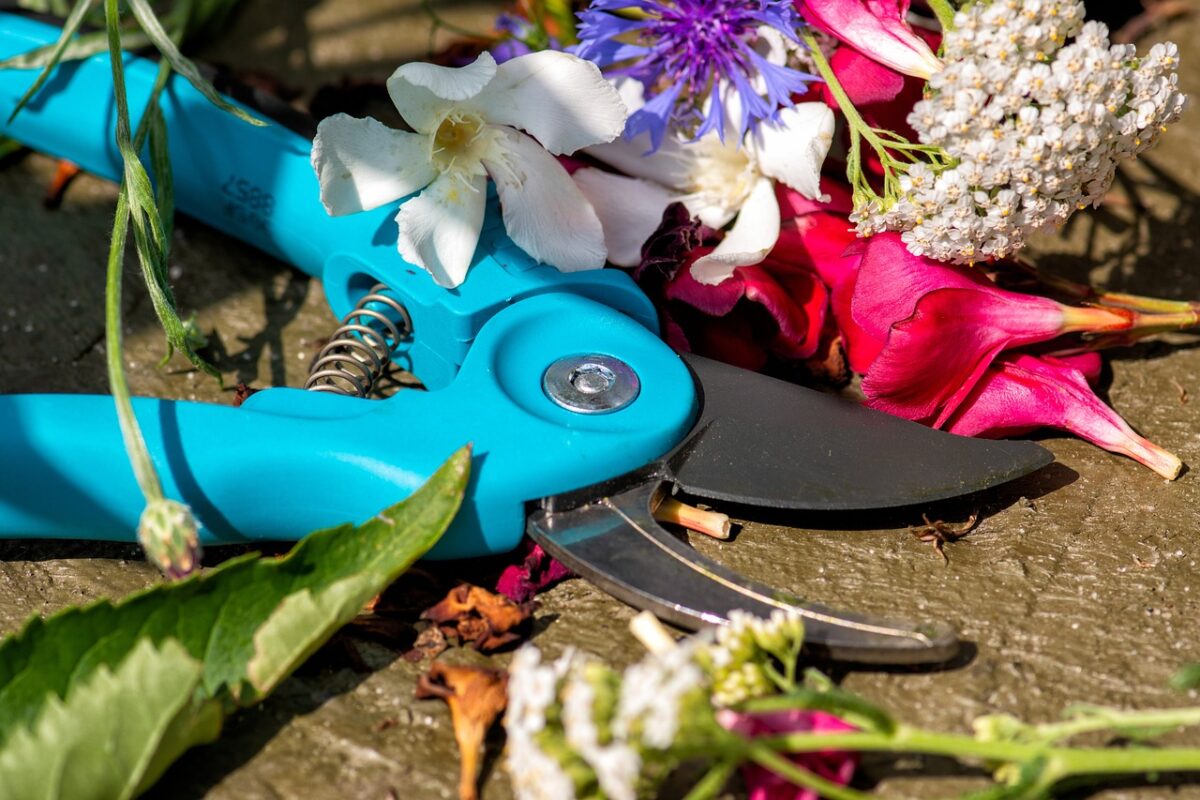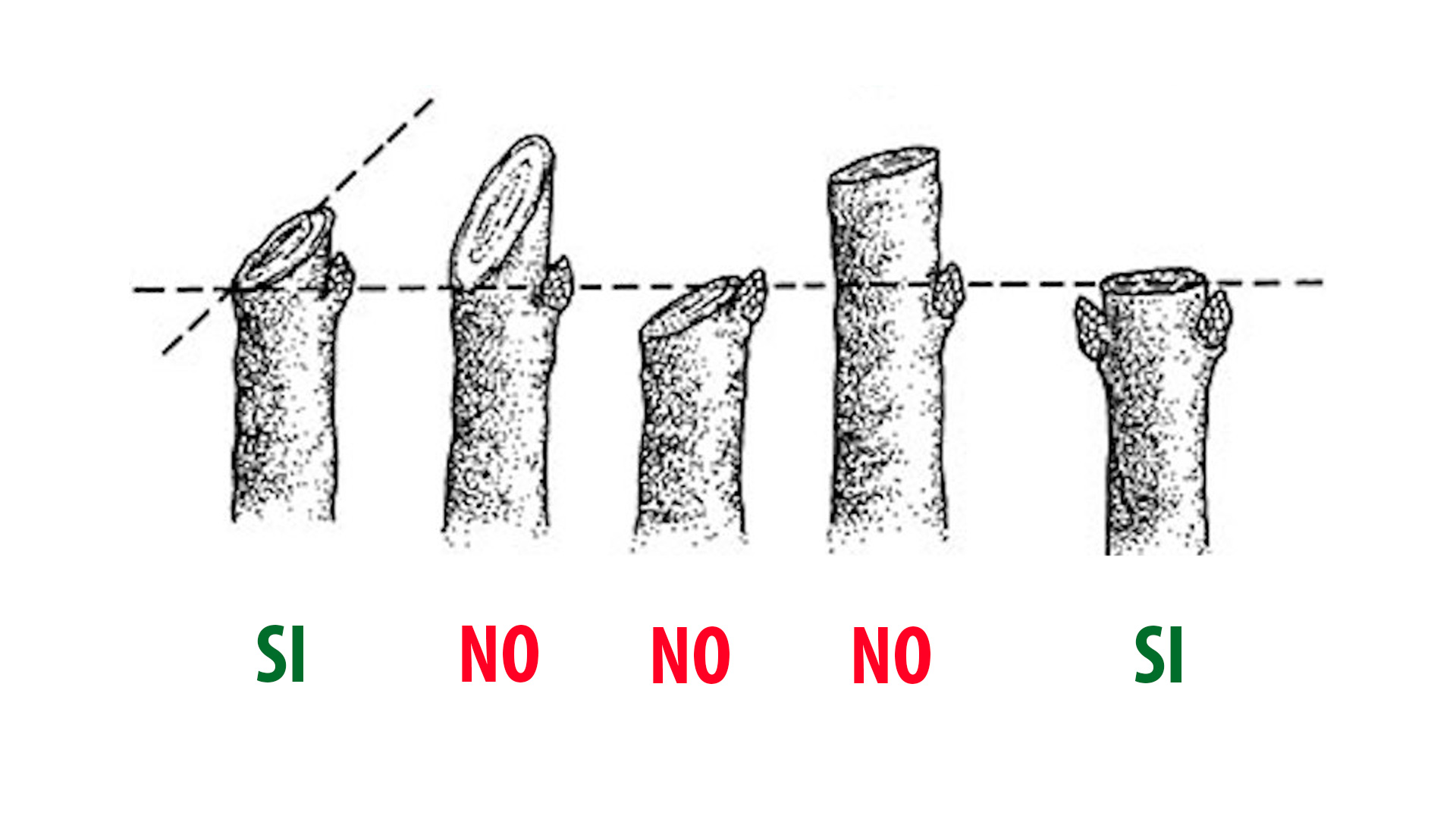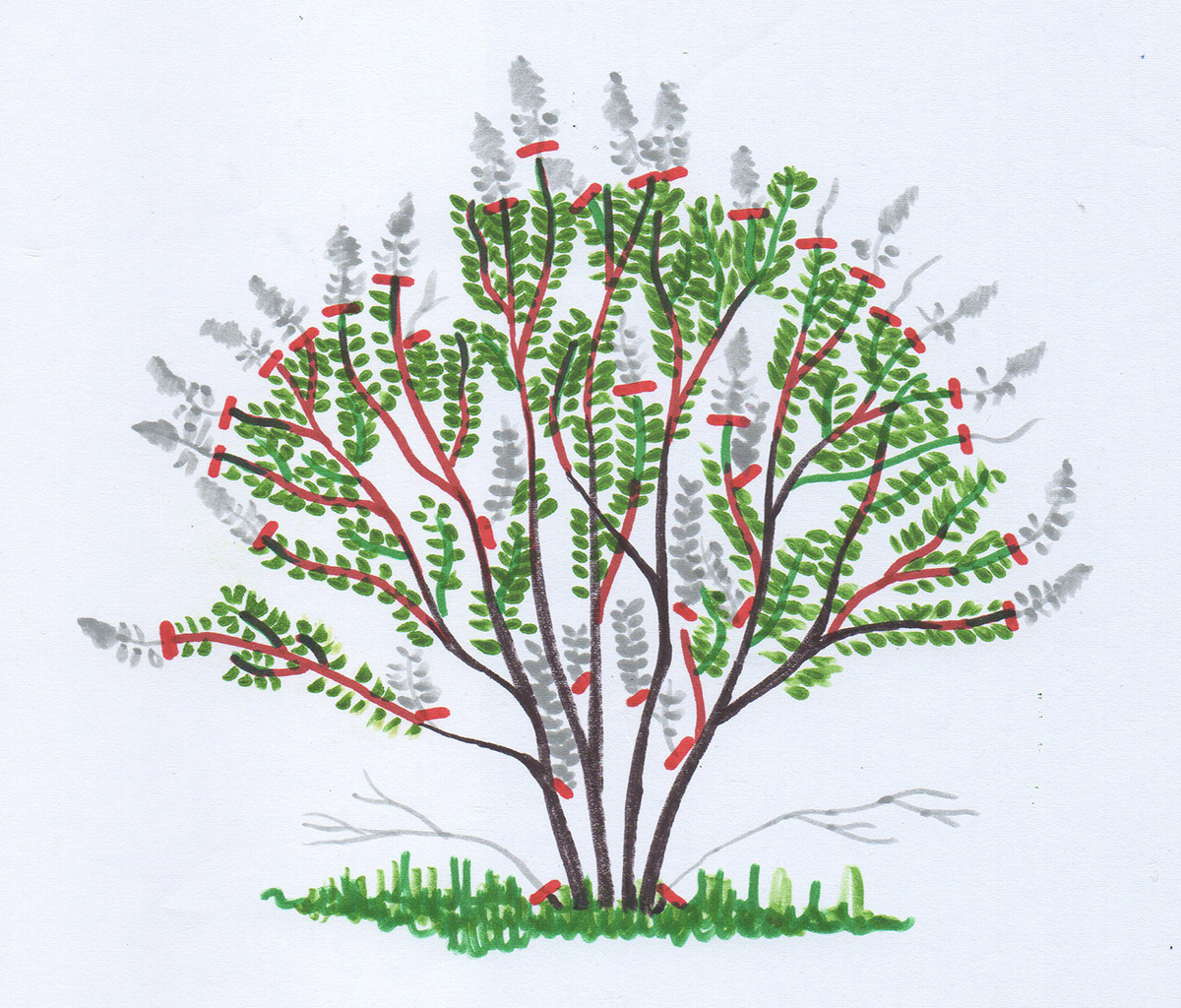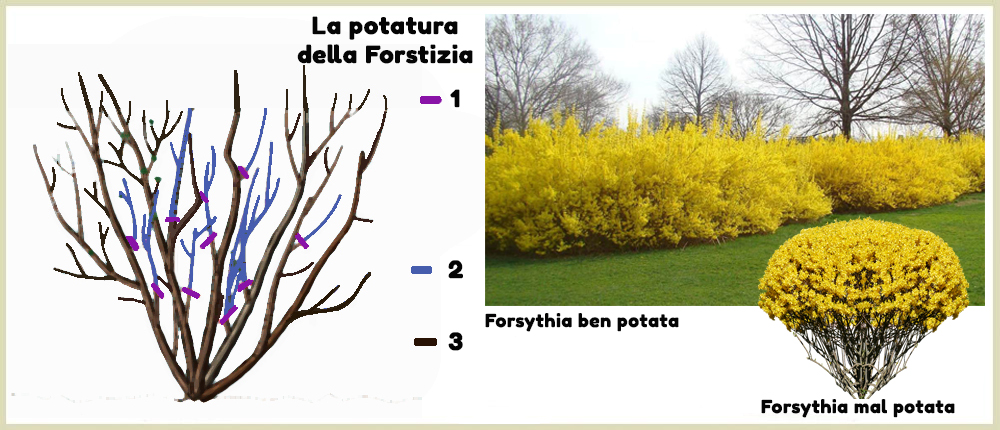Pruning plants in the garden: The previous chapters
We started this pruning journey with the article “Pruning plants in the garden: The Theory“. We learned important things about how to organize work. We then continued the journey with the article “Pruning plants in the garden: The Plants” where we clarified the question of when to prune in relation to the type of branch on which the flowers form even if this is not the only question important. In fact, we had to insert the type of pruning almost plant by plant. Now we know that it is not easy to deal with pruning and we lack some practical indications.
The general theory
Basically, as a general theory applied to practice, we can say that we need to distinguish between the pruning done for the purpose of flowering and that linked to the management of the plant. In fact, pruning linked to flowering is often done at the end of flowering or before the spring regrowth while the old, weak or disharmonious branches (those to understand us that intersect the interior passing from one side to another or go in the exact same direction of a other branch) must be eliminated in any case when the plant is at rest.
Pruning plants in the garden: Shrubs
In this article we will mainly talk about pruning shrubs. The reason is because the gardens that we will personally take care of are mainly medium-small. It’s unlikely that for a large garden there isn’t a gardener who takes care of everything. Furthermore, pruning a tree is a matter that must necessarily be entrusted to a professional. However, we will talk about the “Backcut” that is performed on trees so that you know what it is and how it is performed so that you can check the work of the professional in charge.
Where does it cut on the branch?
Let’s start from the basic information with the specification of where to cut on the branch: not too close or too far from the bud and with an opposite inclination to the latter.
Pruning plants in the garden: 2nd important thing
Second important thing: when you cut a withered branch, you do it at least above a bud or beautiful shoot, not immediately below the flower.
Pruning of shrubs
The general rules are that the branches that have faded flowers are cut by 1/3; the internal branches that go to the other side of the plant or are unnaturally straight or that follow the exact same path as another branch are eliminated. In this case, to decide which of the two to cut, observe them and keep the one that allows the plant to maintain a harmonious shape. Then the weak branches must be eliminated, those too thin also and above all inside the plant. The suckers from the ground and the broken branches must be eliminated.
Let’s take Forsythia as a prime example
to underline (1) pruning points positioned on internal, weak secondary branches or to thin out; (2) the branches eliminated: you can already notice the lightening of the plant also internally; (3) The outer branches are left.
Pruning plants in the garden: The hedges
The hedges should be pruned as soon as they are buried to encourage them to throw new buds and thicken the foliage more quickly.
The question of the beauty and health of hedges does not only concern pruning but also planting. In fact, more elements are always planted than those necessary for the hedge to reach its goals first. However, this provides that once it is ripe, there will be too many elements if you do not want a hedge that is too thick and therefore unhealthy. In fact, each plant needs its own space to develop and remain healthy and beautiful.
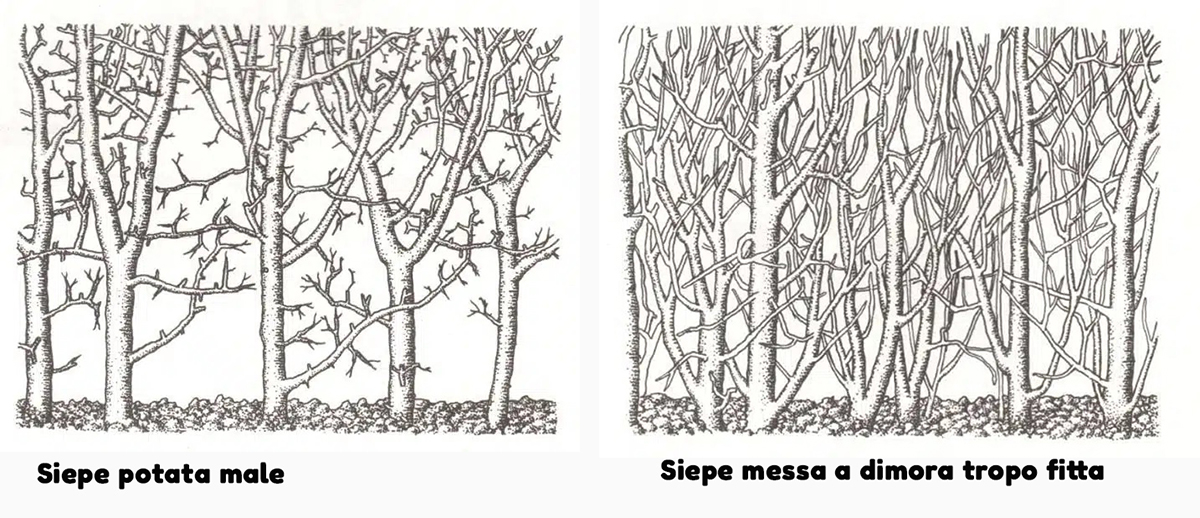
Now let’s talk about some other plants in particular which, however, will give you clear information for pruning all the other shrubs in the garden.
Lavender pruning
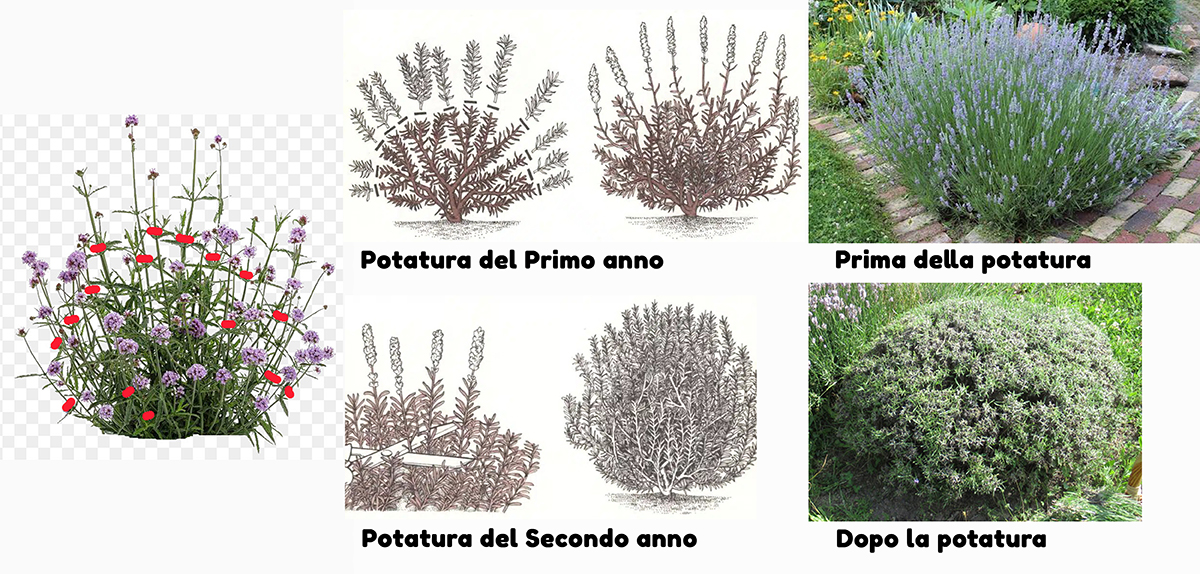
The bushes of lavandula officinale should not be cut on the woody stems because they are unable to emit new shoots at this point. The shearing operation, to be done at the beginning of spring, is limited to shortening to about 15 cm. from the base the vegetation of the previous year.
The pruning of the rose
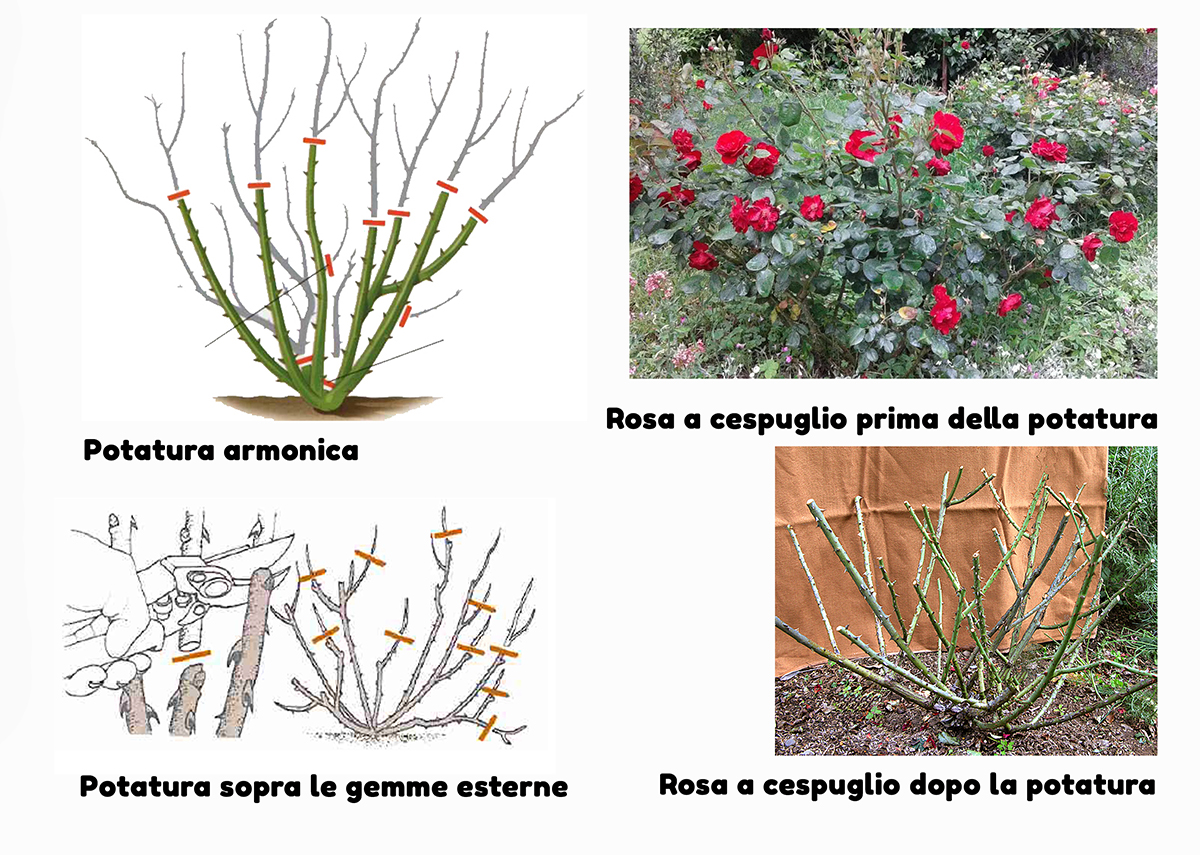
Pruning of roses should be done at the end of winter. Non-remontant sarmentose roses are pruned by cutting the oldest branches in the summer at the end of flowering. For the pruning of the bush rose, short pruning is necessary if necessary to rejuvenate it, medium pruning in case of too thick branches, long pruning annually. The branches that occupy the central part of the bush and those that arise from buds located on the rootstock must be cut. For the pruning of sapling roses, the branches that occupy the central part, those that are too old and the wild ones must be cut. For the pruning of the remontant sarmentosa rose, the portions of the lateral shoots of the sarmento which have borne the flowers must be cut at the base.
Hydrangea pruning
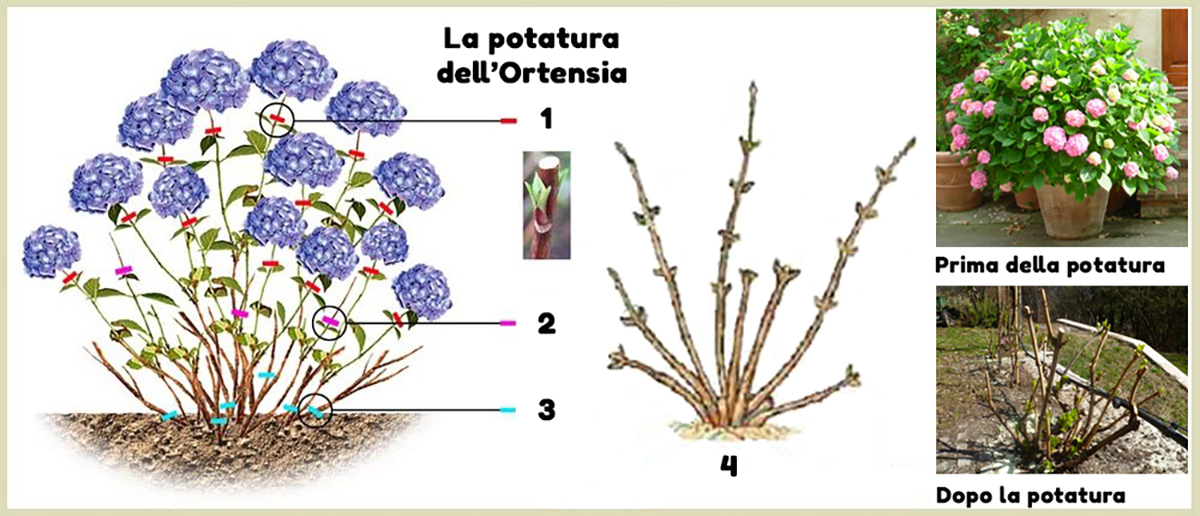
In the image: (1) Eliminate the withered flowers under the first pair of buds or leaves available; (2) if without leaves and flowers, remove the damaged terminals; (3) prune sterile and non-productive branches from the base. The branches with the apical bud should not be touched (4)
hydrangeas flower in summer, and pruning depends on the species. The common hydrangea (Hydrangea macrophylla) flowers on two-year-old branches; if you prune them in spring, cut off all the buds. You have to remove some old branches in spring and leave the young branches intact. You can also remove old buds. The panicle hydrangea (Hydrangea paniculata) and the famous Hydrangea arborescens ‘Annabelle’ are subjected to a drastic pruning (up to 25 centimeters) in spring (March), as they flower on the one-year-old branches. Leave a few pairs of buds at the base: in this way the flowers will be bigger (a bit like the Buddleia davidii).
Backcut pruning
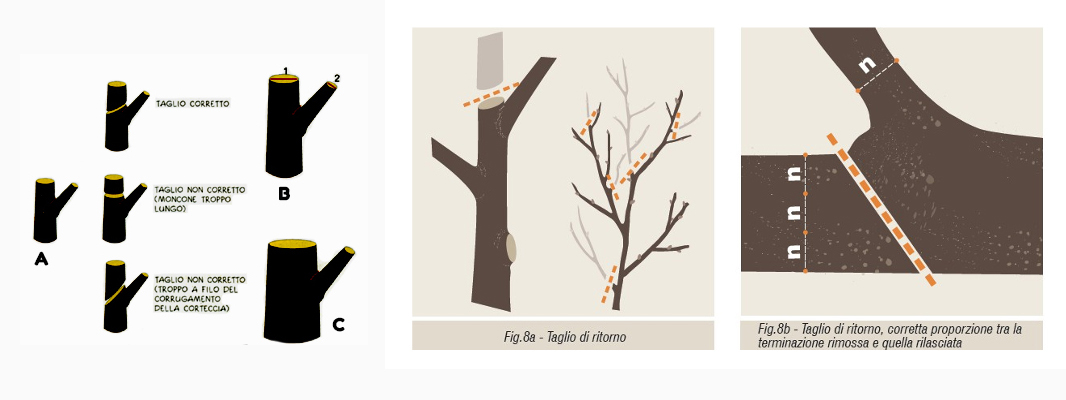
If on a tree we are in the position of having to lower the stage of branches and we have a situation like this (A), to obtain the correct angle of the cut (B) divide the angle ideally formed by the line determined by the corrugation of the bark of the branch (1) and by the perpendicular of the branch to be cut 2. The diameter of the branch being retained should be at least 1/3 (preferably ½) of the diameter of the branch being removed.
If the branch to be cut is too large compared to the one to be kept, it is not possible to perform the back cut (C).
The back cut is a nodal cut
It shortens a branch in correspondence with a lateral branch with a diameter of no less than a third (pruning in correspondence with an insufficiently developed lateral branch can cause desiccation, or the profuse emission of epicormic jets). It is necessary to avoid cutting within the tissue of the higher order branch. On the other hand, the cuts must avoid the release of butts, which can be used by pathogens as a substrate for colonization and development.
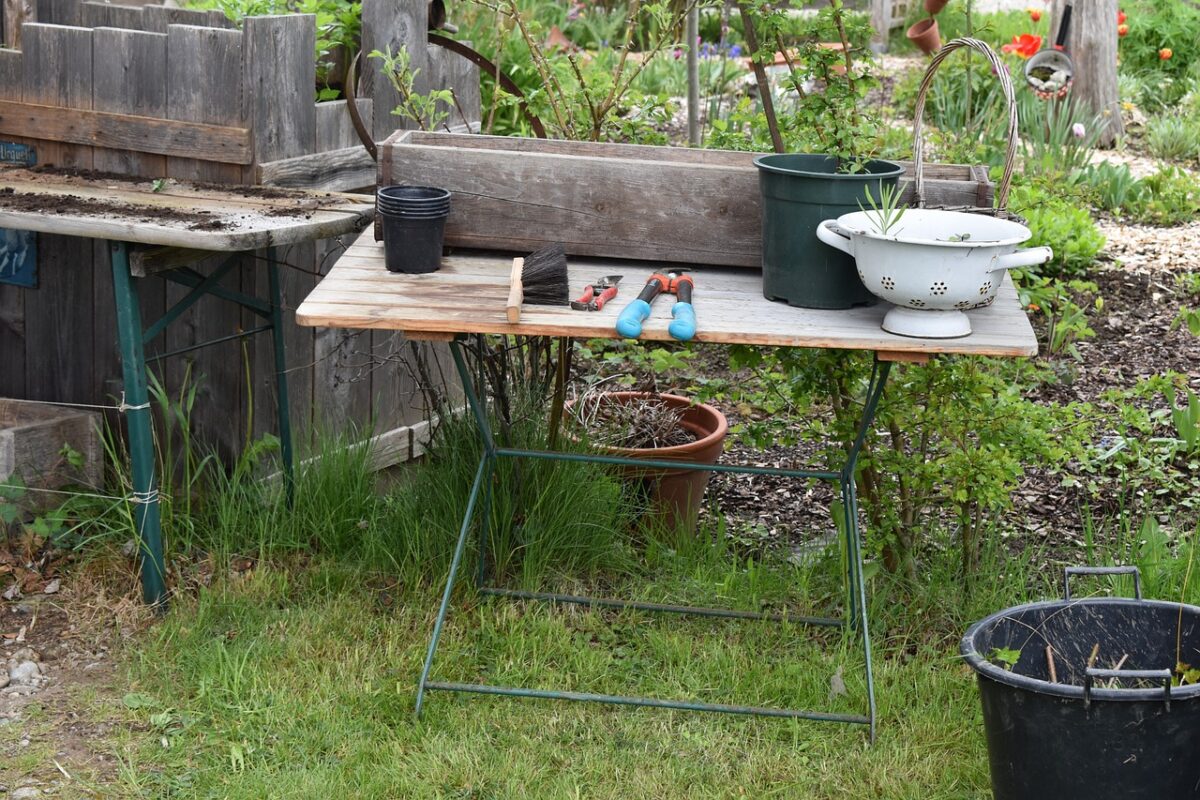
The Garden World Council
To work in harmony with nature, plant the hedges with elements at the right distance and place covering sheets on the fence until the hedge thickens Patience will be good for the wallet, the territory and the planet.
Now on horseback! Work awaits us! Our new wonderful outdoor space is about to be born!
GOOD WORK and … if you have any questions please write to info@mondodelgiardino.com
image sources
Thanks to Pixabay and in particular FabioRibeiro for the hanging shears, Willfried Wende for the shears among the flowers, G.C. for the badly pruned Forsythia, Ben Kerckx for the hydrangea pot, vivaiogardenhouse.com for the hedge and lavender drawings, the companyofroses.com for the pruning points drawing, Roberto Viti for the shear diagram, budding .it for the photo of the rose, vitaincampagna.it for the photo of the pruned rose, roseecose.blogspot.com for the drawing of the hydrangea, G. Michelon of vitatrentina.it for the pruned hydrangea, trafioriepiante.it and legambiente for the return pruning, arredailverde.it for the forsythia on the lawn and bestprato.com for the guide on cutting above the bud.


